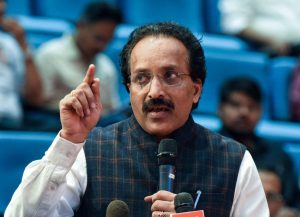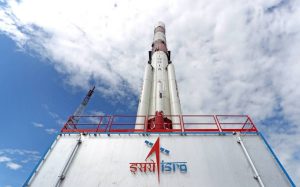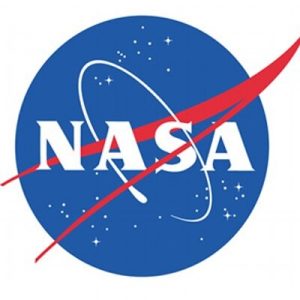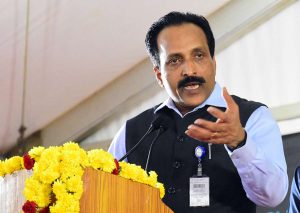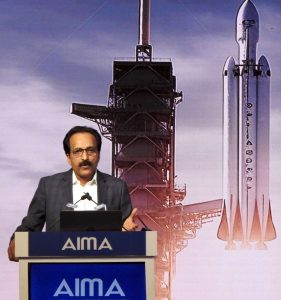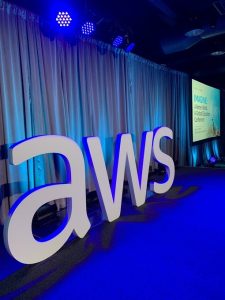My mission is to continue this work and to follow the footsteps of my seniors who have made yeoman contributions in the development of space science in the country and ISRO has played a stellar role in it… ISRO’s new Chairman S. Somanath speaks with Arun Lakshman
With space sector reforms and growth of India’s space economy his topmost priorities, ISRO’s new Chairman
says that ‘Gaganyaan’, the ambitious project to put a human crew in space, is another key objective and the space agency expects that the mission would help lay the robust foundation for a sustainable human flight programme in the long run.
As the Indian Space Research Organisation (ISRO) is undertaking in-depth research and new projects and programmes to take space technology and space to a higher level and for benefits to the common man, it is also for promoting new entrepreneurs and for more and more programmes that would be useful to explore space and for bringing in benefits to mankind, Somanath in an exclusive interview. Following are excerpts:
What are the major programmes in pipeline for ISRO?
The Indian Space Research Organisation is in the process of adapting and adopting to new challenges and opportunities. India will be launching two major space missions in the 75th year of Independence and the ISRO is in an advanced stage of developing the Reusable Launch Vehicle (RLV). We are also in the process of the first launch of the Small Satellite Launch Vehicle (SSLV).
While Covid has put our plans on the backburner or delayed our launches, we are hopeful of completing the landing trial or testing the landing gear mechanism of RLV soon. RLV is a priority and it will bring down the cost of launch drastically as also we need launch vehicles that need to be used even up to 15 times. The scaling down of costs would reflect on more launches and eventually the benefit is transferred to a large number of people.
The design and development of SSLV are almost done and we will be launching it within months.
Gaganyaan will be a top priority and with the Covid pandemic on, it has been delayed a bit but the ambitious push to put a human crew in space is on and we, at the ISRO, hope that the mission would help lay the foundation for a sustainable human space flight programme in the long run. Chandrayan-3 and Aditya-L1 missions are some of the projects awaiting immediate attention.
Can you explain the proportionate impact that a fleet of satellites will have on communication technology?
We aim to have the capability of transmitting directly to handheld devices without any time lapse. This will revolutionalise the information and the infotainment industry. In a similar manner, the low-cost launch will also help improve space application using remote sensing satellites or other low orbit satellites. With the help of Artificial Intelligence, we hope to bring out more services that bring benefit to more people and more lives. Other than this more eyes in the sky would help fine-tune the existing meteorological models along with other observation needs.
There are reports on emerging commercial opportunities in the Space sector. Your comments
There are a lot of emerging opportunities in the space sector and there is a huge enthusiasm among the country’s young entrepreneurs to explore the emerging commercial opportunities in the space sector. We have opened our doors to these game changers and they can explore the envelope of possibilities in this sunrise sector instead of confining their skills and imagination to a particular area of space science.
I can say that there are many skilled and qualified youngsters who are in discussions with the ISRO for their startups that are entering the field. However, there are risks involved in rocket manufacture and developing other launch vehicles and risk is a great factor in the manufacturing and assembling of satellites.
The maximum interest being envisaged in the commercial side is on the low-risk area of application development based on space-based data and becoming providers of space-based services opens a vista of opportunities to these youngsters who have the entrepreneurial bug and ISRO is fully supporting them.
How are the strides in Indian space research beneficial to common man?
While most of the nations were used space for projecting another dimension of their defence power, we, in India, used it for reaching the scientific benefits to the common man of the country. The giant strides the country has made in telemedicine, weather forecast, agriculture, and distance education are a few examples that we can showcase on the contribution we have made in space research that is directly transferred as benefits to common man.
My mission is to continue this work and to follow the footsteps of my seniors who have made yeoman contributions in the development of space science in the country and ISRO has played a stellar role in it.
We know that there are several departments in the country that need the support of space technology and we will improve interactions with them to develop user-based initiatives in these areas. At present we are in direct contact with some government institutions and we will expand it to a larger number and spread our wings with indirect contact with some government bodies. The idea is to bring them all under one umbrella and develop products that uplift the lives of common people in the country.
There are a lot of discussions on graveyard orbits being in use by major players in space. Please explain
Graveyard orbit is used when the change in velocity required to perform a de-orbit maneuver is too large. For satellites in geostationary orbit and geosynchronous orbits, the graveyard orbit is a few hundred kilometers beyond the operational orbit. The transfer to a graveyard orbit beyond geostationary orbit requires the same amount of fuel as a satellite needs for about three months of stationkeeping.
We are planning to put an old satellite into graveyard orbit in the near future. This is done when a satellite is nearing its life and the remaining life is less than a few months and when the controls are still active.

Could you tell us about your journey to ISRO?
I did my schooling at St. Augustine High School, Aroor which is a government-aided school, and those days the pass percentage in the school was very low – around 30 per cent of those who write the Class 10 board exam. I was the topper in Kerala for physics, chemistry, mathematics, and biology in school and it was a great achievement those days that gave me a morale booster. My father was a Hindi teacher but he was scientifically oriented and he was the one who inculcated or rather kindled the interest in science in me.
Those days we did assemble our own radio and my father was keen that I read good science publications during my school days. I did my pre-university at the prestigious Maharajas College in Ernakulam and did my BTech in Mechanical Engineering from TKM College of Engineering, Kollam. I did my Master’s degree in aerospace engineering from the Indian Institute of Science, Bangalore with a specialisation in Dynamics and Control and I joined the ISRO in 1985.
ALSO READ-TWIST: ISRO case gets a new version – martyr or kingpin?

